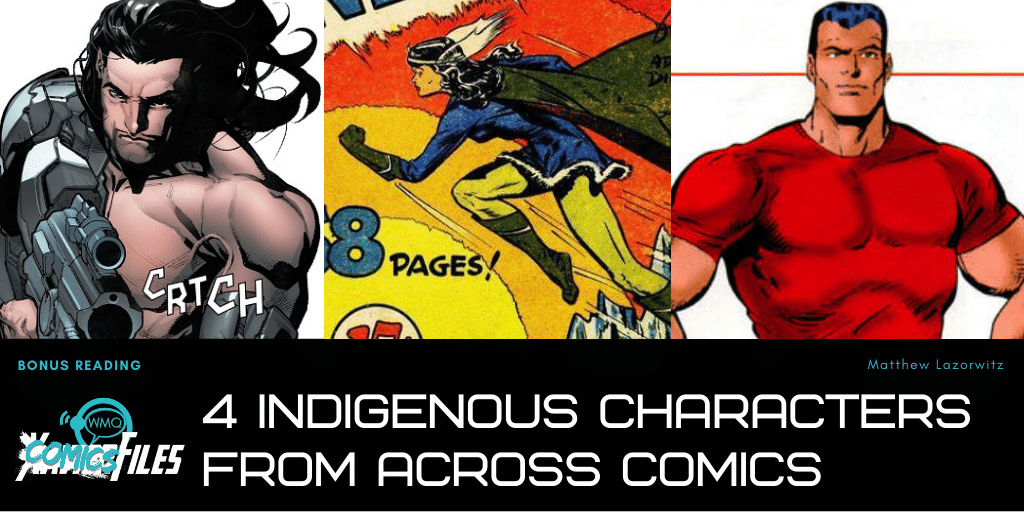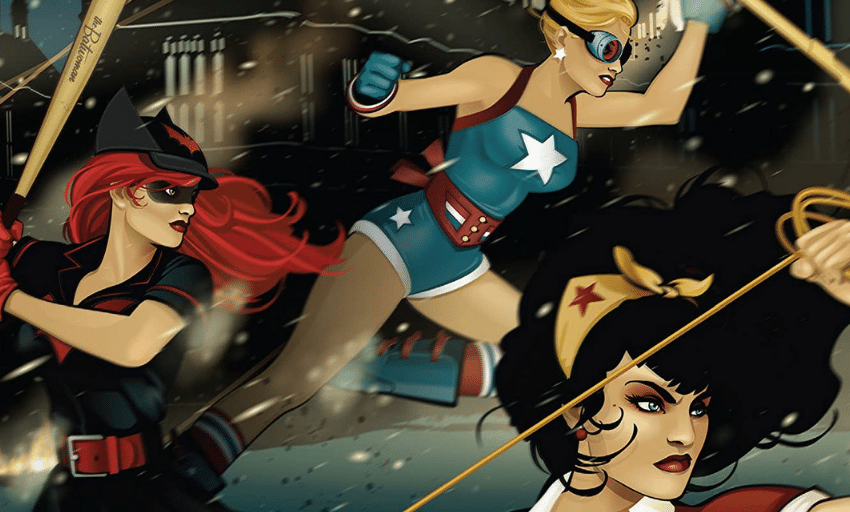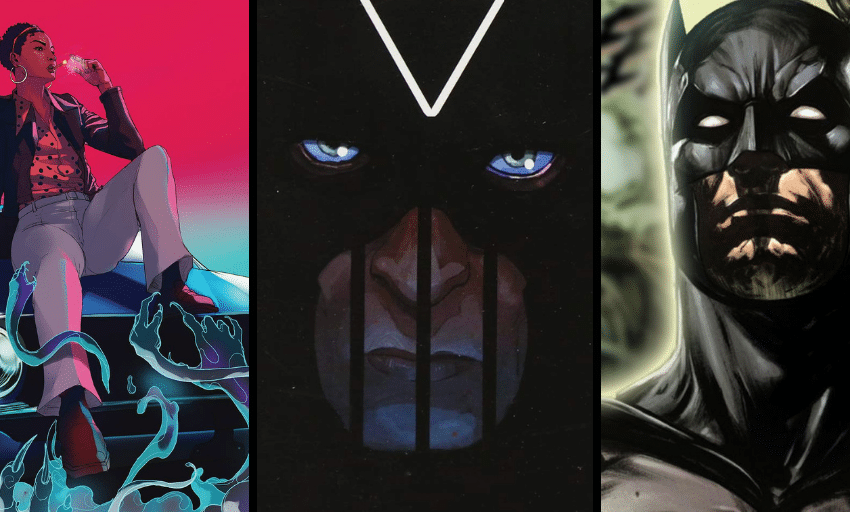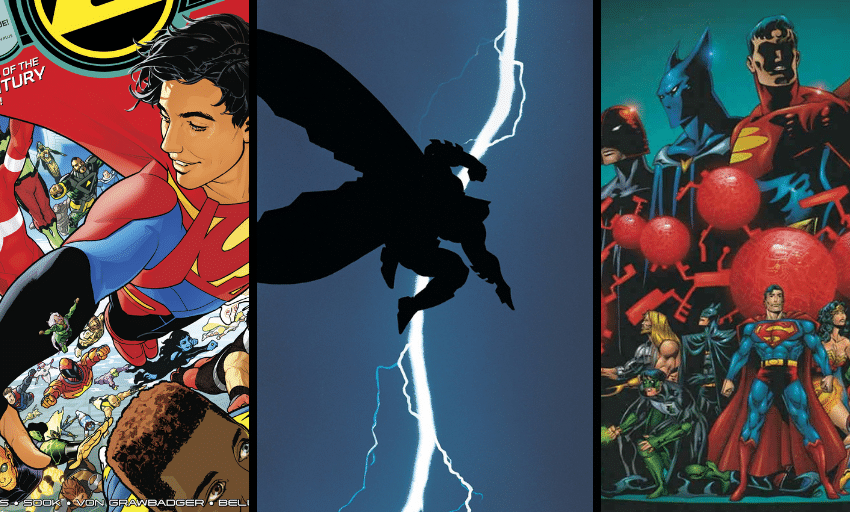I think we all wish that comics were more equitable and diverse, both when it comes to who creates them and who appears in them. While recent years have taken steps in the right direction, there are still plenty of under-represented groups.
Marvel this year launched a series of one-shots featuring characters and creators of marginalized groups, called Marvel Voices, the second of which dropped Wednesday. “Marvel Voices: Indigenous Voices” features creators from First Nations and other groups native to the continental Americas. So this week’s Bonus Reading focuses on four characters from indigenous groups across comics and comics-adjacent animation.
Wyatt Wingfoot

When I thought about indigenous characters from Marvel Comics, aside from the very obvious X characters (Thunderbird, Warpath, Dani Moonstar, etc.), the first one that came to mind was Wyatt Wingfoot. Wyatt is a member of the fictional Keewazi, although some appearances have connected him to the real-world Comanche as well, and he’s one of those great supporting characters who don’t get the credit they’re due.
Wyatt has been a supporting cast member of the Fantastic Four since issue #50. Yes, the last part of “The Coming of Galactus.” He was college classmates with Johnny Storm, and traveled with the FF to Wakanda and to the Inhumans’ Great Refuge in some of the seminal Fantastic Four stories of the Lee/Kirby era. Wyatt would continue as a regular supporting cast member through that era and into future creative teams. He would often serve as a moderating influence on his pal Johnny, who tends to be more hot-headed (Get it? That’s a Human Torch pun!).
Wyatt often serves as the champion of the Keewazi, and at times has been the chief of the tribe. He also has been the on-again/off-again love interest of She-Hulk. The two met during her tenure as a member of the FF, and he was a key supporting character during her more comedic, fourth-wall breaking “Sensational She-Hulk” run. During this period, there also was a Wyatt-centric two-issue She-Hulk miniseries, “Ceremony,” written by the legendary Dwayne McDuffie, which I admit to not having read yet, but it’s high on my list, having found it at one of the last cons I went to.
Remember cons? Weren’t they great? [Grote’s note: DEEP SIIIIIIIIIIIIGH.]
Elisa Maza

This one is a bit more of a stretch than I usually go for in these columns, but it lets me write about one of my top two animated series of all time, “Gargoyles.” And hey, Marvel published “Gargoyles” tie-in comics with some early Amanda Conner art, and series creator Greg Weisman did canonical continuation comics at SLG, so there is a connection!
Elisa Maza was the main human protagonist in Disney’s stellar weekday afternoon cartoon “Gargoyles.” The series focused on a clan of Scottish gargoyles, reawakened after being frozen in stone by a magic spell for 1,000 years in then-modern Manhattan. As opposed to so many action cartoons of the time, and plenty now, we have a competent female main character who was never a damsel in distress — well, except for the first episode where Goliath, the main Gargoyle, swoops down and catches her after she falls off a building, but that’s a meet-cute, so it gets a pass. On top of being a female protagonist, Elisa is a protagonist of color — her mother is African American, and her father is Hopi.
Elisa serves as the guide to the strange new world the Gargoyles have found themselves in, growing especially close to Goliath, the clan leader with whom she shares a romantic bond that goes unexpressed for much of the series, and Broadway, whose fascination with detective movies draws him to Elisa, who is an NYPD detective. That bond is key to one of the series’ best episodes, “Deadly Force,” which tackles gun violence. While aired initially, it was removed from syndication because the topic was later deemed by Disney brass as too intense for young audiences.
Elisa’s Hopi heritage would become part of the plot of the series in the episode “Cloud Fathers.” On a mystical tour of the world with Goliath, his daughter Angela and the Gargoyle beast Bronx, Elisa finds herself in Falstaff, Arizona, at the same time as her father, Peter, who left his tribe and his family, and refused to look back. Now, he is back, along with Elisa’s sister Beth, and they have run afoul of the Hopi trickster deity, Coyote, and one of the series’ principle antagonists, industrialist and mystical hobbyist David Xanatos. Peter must come to terms with his past and his heritage to help save Coyote from Xanatos and his robot henchman, also named Coyote.
Greycrow

Mr. Sinister’s Marauders are the original X-Men villain goons. Yes, the Brotherhood of Evil Mutants appeared first, but each of those characters got time to develop and were given personalities. The Marauders, other than being a cadre of sadistic jerks, didn’t have much going on, Sabretooth and Malice excepted. In recent years, one Marauder has been given some more time to shine — John Greycrow, a member of the Comanche and the villain once known (uncomfortably) as Scalphunter.
Greycrow first appeared as one of the Marauders during “The Mutant Massacre,” where he, along with his teammates, gleefully slaughtered as many of the sewer-dwelling Morlocks as they possibly could. It was revealed he was one of the Marauders who had a previous connection to Remy LeBeau, the mutant known as Gambit, who recruited Greycrow to be one of Sinister’s crew.
The Marauders would take a backseat to other teams of mutant henchmen after the “Inferno” storyline, with characters like the Acolytes, the Mutant Liberation Front, the Dark Riders and the Natsy Boys becoming the default mutant hirelings. But the Marauders were first and more terrifying, and as Sinister rose to prominence, the Marauders returned with him. Greycrow would serve Sinister through many of his machinations, but it was after the events of “Messiah Complex” where Greycrow began to form as a character,
Alone and on the run, Greycrow is confronted by Nightcrawler, who gives him some thoughts on faith and Greycrow’s nature as a clone (Most of the Marauders are clones created over and over by Sinister). Greycrow spent time on Utopia, working with the X-Men, and one version of him was reprogrammed from Sinister’s template by Magneto and served him before the most recent “Secret Wars.” That is possibly the version killed in the final “Uncanny X-Men” run before the current status quo. The current Greycrow, as portrayed in Zeb Wells and Stephen Segovia’s “Hellions,” is a fascinating character, haunted by the atrocities he has committed, and seeking something between retribution and punishment.
Nelvana of the Northern Lights

Nelvana of the Northern Lights is one of those fascinating Golden Age characters comic book history geeks like me really dig. Created by Adrian Dingle, Nelvana is the first Candian superhero, and one of the first female superheroes, predated by Fletcher Hanks’ batshit-crazy Fantomah (not a diss, because anything Fletcher Hanks is batshit crazy in the best way), and a small handful of others, but still predating Wonder Woman.
Nelvana was the daughter of an Inuit woman and Koliak, the King of the Northern Lights. She often fought mythical beasts, but as time went one, as many heroes of the era did, she became a Nazi fighter. She could travel at the speed of the Northern Lights, project energy and was telepathic.
Nelvana is probably more important for her cultural relevance than the stories she was featured in. She was beloved in Canada, and the Canadian animation studio Nelvana was named after her; look it up and see a list of some of the highlights of ’80s and ’90s TV animation, as well as some really weird ones. Nelvana also is the inspiration for Nelvanna, the mother of Marvel Comics’ Alpha Flight member Snowbird, so a Nelvana analogue exists in the Marvel Universe.
Matt Lazorwitz read his first comic at the age of five. It was Who's Who in the DC Universe #2, featuring characters whose names begin with B, which explains so much about his Batman obsession. He writes about comics he loves, and co-hosts the creator interview podcast WMQ&A with Dan Grote.






